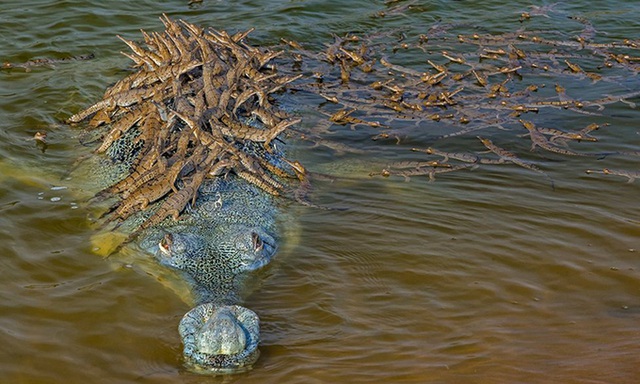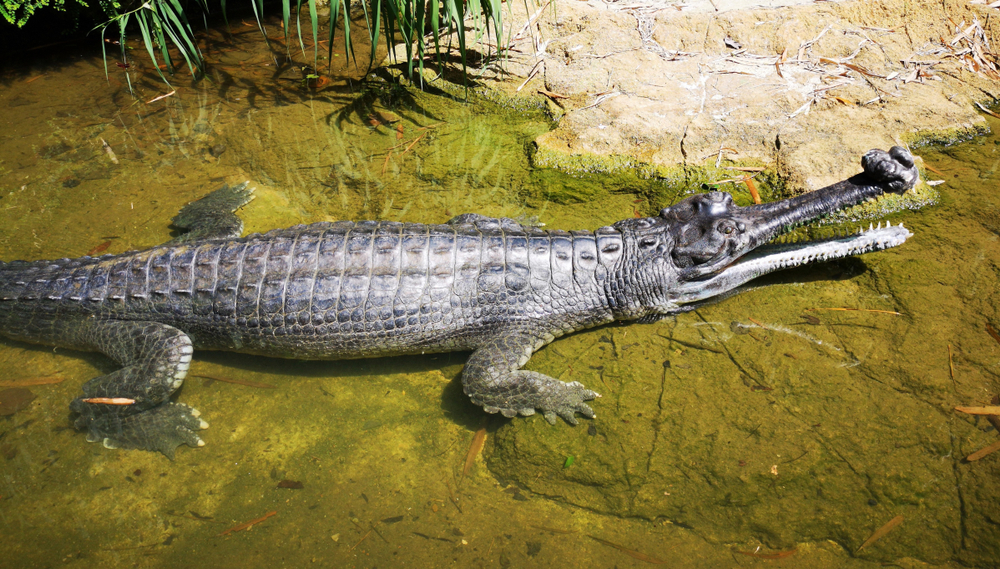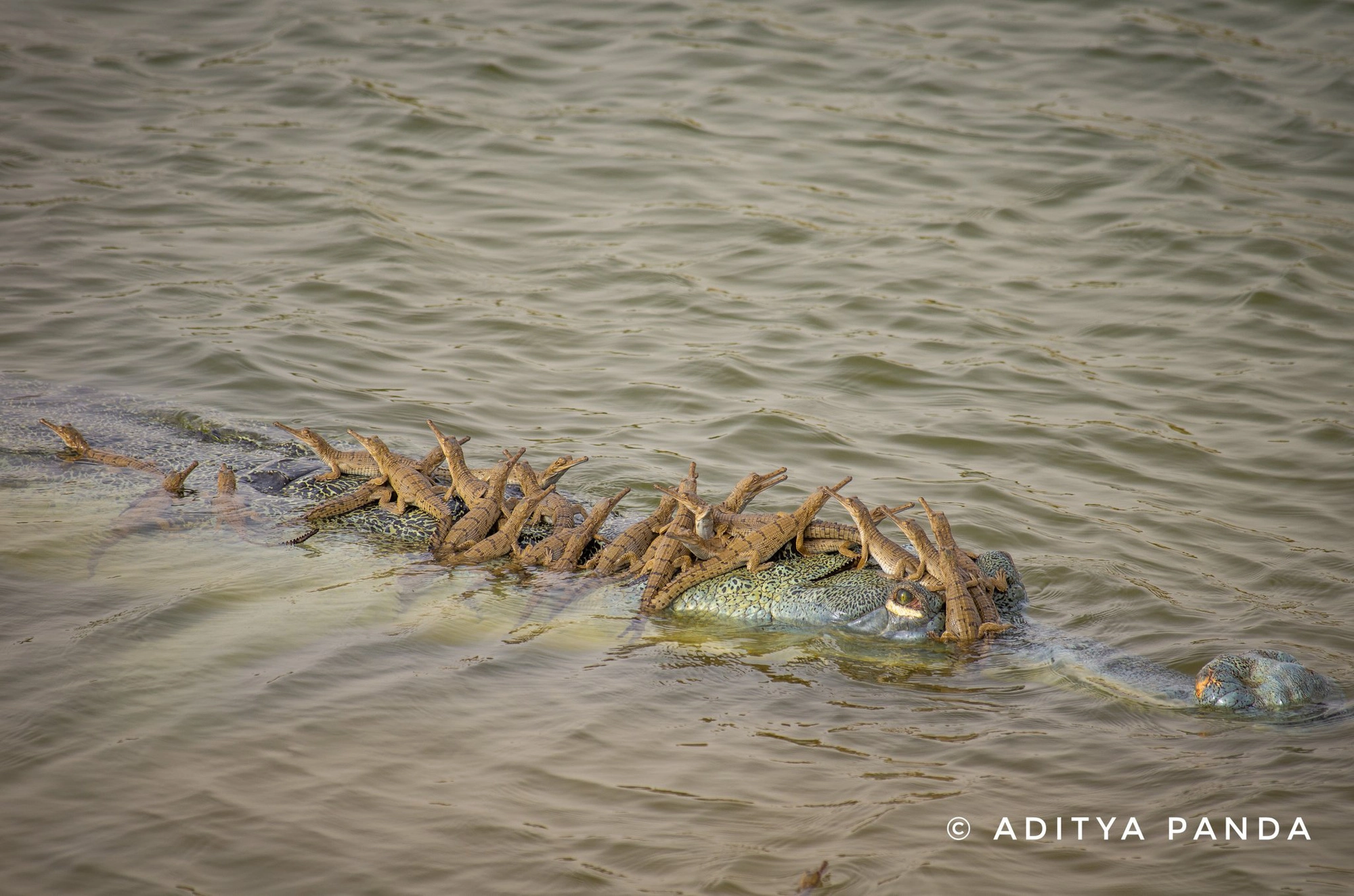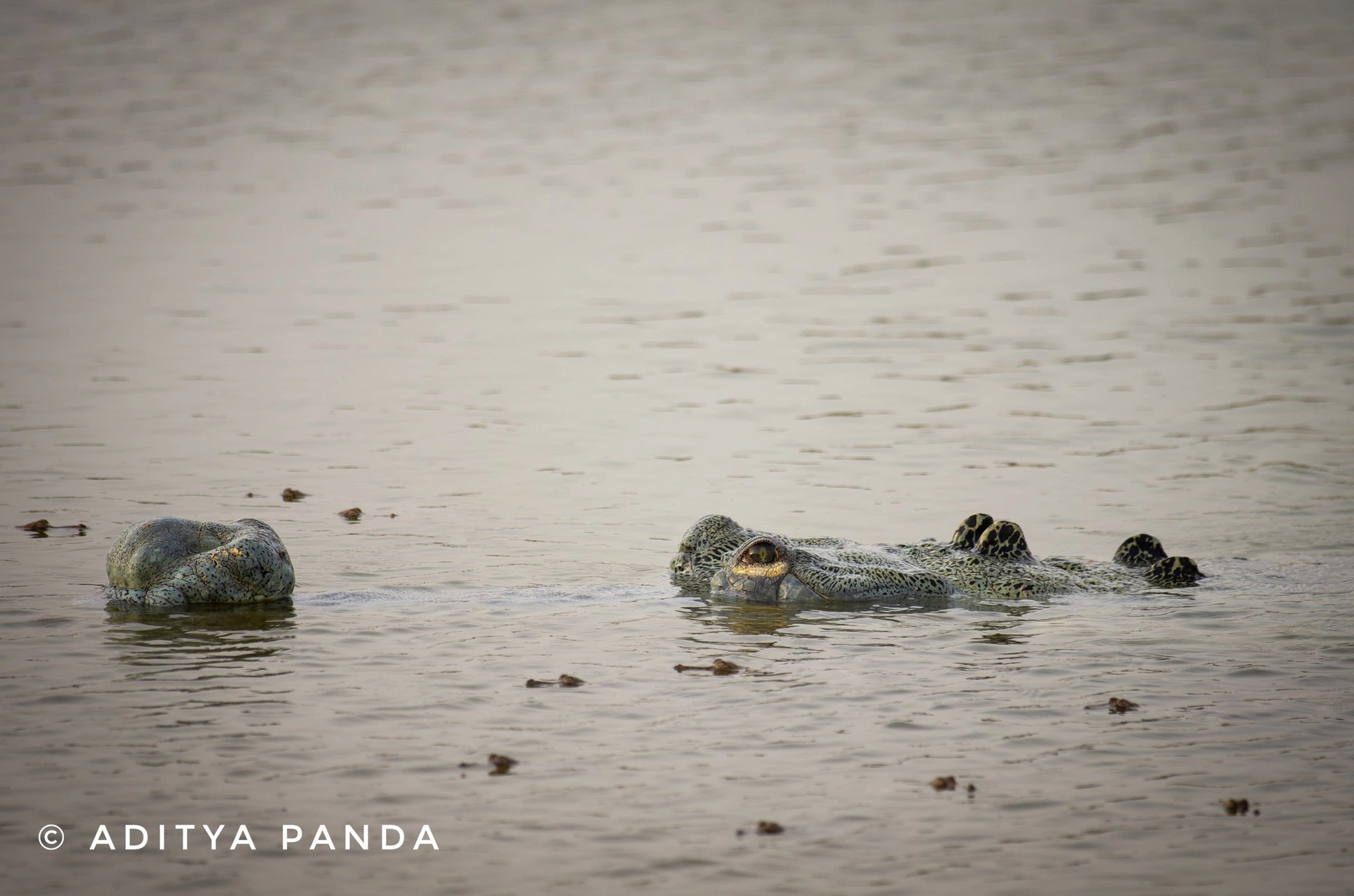Captivating Scene: Father Crocodile Carries Over 100 Baby Crocs on His Back

In a stunning photograph captured in India, a father crocodile is seen swimming in a river, bearing an extraordinary burden on his back.
What is he carrying? Dozens of baby crocodiles. Take a closer look. Can you count them all?

More than 100 tiny tails and pointed, scaly snouts swarm over their father, completely covering his massive back as he glides through the river.
This remarkable sight took place in the National Chambal Sanctuary in northern India and was captured by photographer and conservationist Dhritiman Mukherjee. Mukherjee, known for spending around 280 days a year in the field, has witnessed extraordinary scenes across northern India and beyond.
Through his talent as a photographer, Mukherjee aims to promote wildlife conservation. This exceptional photograph of a father crocodile ferrying his one-month-old offspring on his back sheds light on a critically endangered species known as the gharial crocodile, a freshwater crocodile native to northern India.
Decades ago, there were approximately 20,000 of these crocodiles living in the wild. However, due to habitat loss since the 1930s, their population has dwindled to about 1,000 mature individuals today.
Gharial crocodiles inhabit various regions in South Asia, with two-thirds of their population residing in the Uttar Pradesh Sanctuary in northern India.
Mukherjee’s incredible photograph was submitted to the Natural History Museum’s prestigious Photographer of the Year competition in 2020 and generated considerable excitement. It is indeed a rare and significant sight.
Mukherjee wisely took the photograph from a safe distance.
He shared with the BBC, “This male had mated with seven or eight females, and you can see that it was very much involved. Normally, the gharial is quite a shy crocodile compared to saltwater and marsh crocs. But this one was very protective, and if I got too close, it would charge me. It could be very aggressive.”
This exotic crocodile differs from other species, such as the Nile and saltwater crocodiles found in Africa and Australia, respectively. The gharial has a narrow snout with a distinct bulge on the end, serving a specific purpose.
According to Patrick Campbell, senior curator at the London Natural History Museum, the snout’s structure enables vocal sounds to be amplified.
As evident in Mukherjee’s photo, the gharial handles its young in a peculiar manner—piggyback style. Not all species of crocodiles transport their young in this way.
“Other crocs carry their young about in their mouth, this very carefully, of course,” adds Campbell. “But for the gharial, the unusual morphology of the snout means this is not possible. So, the young have to cling to the head and back for that close connection and protection.”
The name “gharial” comes from the Hindi word “ghara,” which means an earthenware pot. This fascinating species is one of the largest living crocodiles today.
Their decline, starting from the 1930s, was mainly caused by dams and barges disrupting their river habitat, as well as sand extraction and boulder removal damaging their nesting environment, according to the BBC. There is also the constant hazard of getting tangled in fishing gear.
However, both India and Pakistan have aided the species’ recovery through captive breeding programs. The photograph taken by Mukherjee symbolizes hope for the species’ future—revealing countless young crocodiles, each with the potential to grow, mature, and mate, thereby producing countless more gharial crocodiles.
Mukherjee hopes that his passion for







